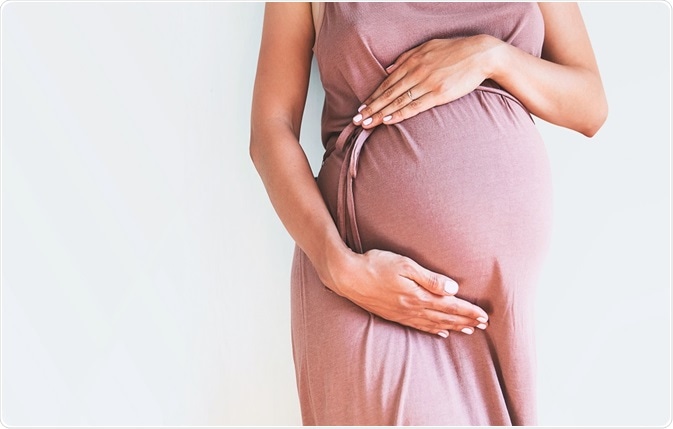What is the Third Stage of Labor?
The third stage of labor involves the separation of expulsion of the placenta. The third stage is most important because it is a primary factor in determining whether postpartum hemorrhage (PPH) will occur.
 Credit: Natalia Deriabina/Shutterstock.com
Credit: Natalia Deriabina/Shutterstock.com
Labor is classified into several stages. In modern obstetric practice, there are three stages of labor:
- Stage 1: up until descent of the fetal head to the pelvic floor
- Stage 2: active expulsion of the baby
- Stage 3: expulsion of the placenta
Postpartum hemorrhage (PPH) refers to excessive blood loss following labor and delivery, and it is one of the leading factors resulting in maternal morbidity and death. It is estimated to be the cause of death for 99% mothers who die due to childbirth from developing or undeveloped countries, and of these, about one-third do so as a direct result of PPH.
For this reason, the duration of the third stage has been intensively studied. It normally lasts anywhere between 5 minutes to an hour, depending upon whether it is actively managed or allowed to progress spontaneously.
Phases of the third stage of labor
The third stage of labor consists of two phases: the separation of the placenta, and its exit. The separation of the placenta is normally rapid and thorough. Any delay, or failure to separate as one complete unit, leads to the opening of uterine blood sinuses and postpartum hemorrhage.
The most important causes of delay in placental expulsion include:
- Poor uterine contraction and retraction
- Chorioamnionitis (infection of the placental tissue)
- Placenta accreta or percreta (inappropriately deep implantation of the placenta which makes separation impossible)
- Succenturiate lobes of the placenta (additional lobes attached to the main body of the placenta by a very thin connection)
The placenta is usually expelled within 6-7 minutes, but this may depend upon the parity, gravidity, method of labor induction and whether pethidine analgesia is used during the first and second phase of labor. The impact of these factors has not been established as yet, but a few studies have revealed a connection between active induction of labor, labor augmentation, and the use of pethidine in labor with subsequent uterine atony and retained placenta leading to PPH.
Other factors linked to prolonged third stage include preterm labor, the use of a labor bed during delivery, preeclampsia and primiparity. A third stage lasting longer than 30 minutes (or 20-24 minutes, depending upon various methods of analysis, is associated with a steep rise in the incidence of PPH and blood transfusion, until a duration of 75 minutes at which point it plateaued). This remains the same whether the placenta was spontaneously expelled or manually removed
Sources
- https://www.ncbi.nlm.nih.gov/pmc/articles/PMC3696975/
- https://www.ncbi.nlm.nih.gov/pubmed/2030858
- https://www.ncbi.nlm.nih.gov/pubmed/7726270
- https://www.ncbi.nlm.nih.gov/pmc/articles/PMC1115220/
- https://www.ncbi.nlm.nih.gov/pubmed/12476398
- www.womenshealth.gov/pregnancy/childbirth-and-beyond/labor-and-birth
- https://www.marchofdimes.org/pregnancy/stages-of-labor.aspx
Further Reading
- All Pregnancy Content
- Early Signs of Pregnancy
- Is it Safe to Exercise During Pregnancy?
- Pregnancy: 0-8 weeks
- Pregnancy: 9 – 12 weeks
Last Updated: Feb 27, 2019

Written by
Dr. Liji Thomas
Dr. Liji Thomas is an OB-GYN, who graduated from the Government Medical College, University of Calicut, Kerala, in 2001. Liji practiced as a full-time consultant in obstetrics/gynecology in a private hospital for a few years following her graduation. She has counseled hundreds of patients facing issues from pregnancy-related problems and infertility, and has been in charge of over 2,000 deliveries, striving always to achieve a normal delivery rather than operative.
Source: Read Full Article
